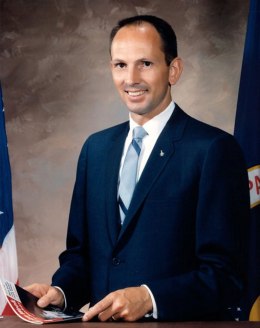
Jim Lovell and Pete Conrad, a pair of young astronauts who had not yet flown, were returning from a day of goose hunting near Ellington Air Force Base in Houston one day in 1964 when they saw a crowd surrounding what appeared to be the wreckage of a T-38 jet. They jumped out of the car, ran through the grass and asked who the pilot had been. Ted Freeman, they were told, a rookie astronaut who had entered the program a year after they did. Something had caused his plane to go into a powerless plunge as he was trying to land; he bailed out, but too late for his chute to open. Lovell, as first on the scene, was assigned to investigate the cause of the crash. With the help of the jet’s surviving instruments, he was able to determine the exact moment it lost power, which led him to almost the exact of area of Texas brush over which it was flying when the fatal breakdown occurred. Scouring the area, he found two things: The shattered windshield of the plane and the bloody remains of a Canada snow goose. The bird, clearly, had collided with the plane, instantly killing itself and, a few seconds later, the human being at the controls. History did not record how many geese Lovell and Conrad bagged that day, but both men likely wished they’d shot one more.
